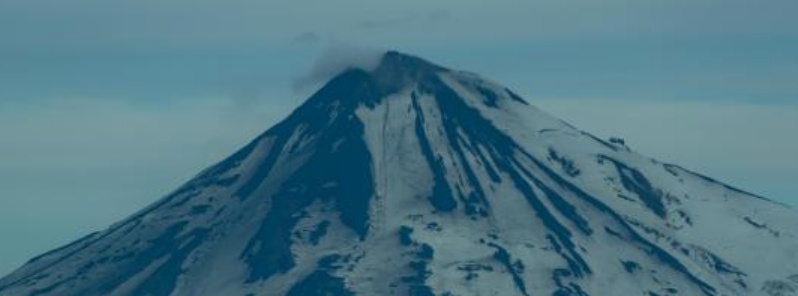Increased seismicity, alerts raised for Pavlof volcano, Alaska

Seismic activity at Pavlof volcano, Alaska has increased over the past several days, forcing the Alaska Volcano Observatory to raise the Alert Level to Advisory and the Aviation Color Code to Yellow at 20:43 UTC on December 28, 2019. Pavlof is a snow- and ice-covered stratovolcano about 953 km (592 miles) southwest of Anchorage. With over 40 historic eruptions, it is one of the most consistently active volcanoes in the Aleutian arc. Pavlof's largest known historical eruption took place in 1911.
There is currently no observed eruptive activity or emissions from the summit.
Although the current seismic activity represents an increase from background levels, it does not necessarily mean that an eruption is likely or imminent. However, past eruptions of Pavlof occurred with little or no warning.
Small explosion signals have been detected on the infrasound network located at Sand Point and on the local seismic network on October 19, 2019.
It is unknown if the explosions produced any volcanic ash, but their small size suggests any hazard was confined to the area around the volcano's summit.
Low-frequency seismic tremor and vigorous steam plume have been observed on May 14 and 15, 2019.
Its last known eruption took place from March 27 to July 30, 2016 (VEI 2).
Geological summary
The most active volcano of the Aleutian arc, Pavlof is a 2 519-m-high (8 264 feet) Holocene stratovolcano that was constructed along a line of vents extending NE from the Emmons Lake caldera.
Pavlof and its twin volcano to the NE, 2 142-m-high (7 027 feet) Pavlof Sister, form a dramatic pair of symmetrical, glacier-covered stratovolcanoes that tower above Pavlof and Volcano bays.
A third cone, Little Pavlof, is a smaller volcano on the SW flank of Pavlof volcano, near the rim of Emmons Lake caldera.
Unlike Pavlof Sister, Pavlof has been frequently active in historical time, typically producing Strombolian to Vulcanian explosive eruptions from the summit vents and occasional lava flows. The active vents lie near the summit on the north and east sides.
The largest historical eruption took place in 1911, at the end of a 5-year-long eruptive episode, when a fissure opened on the N flank, ejecting large blocks and issuing lava flows. (GVP)
Featured image: AVO/USGS, Chris Waythomas

Commenting rules and guidelines
We value the thoughts and opinions of our readers and welcome healthy discussions on our website. In order to maintain a respectful and positive community, we ask that all commenters follow these rules.